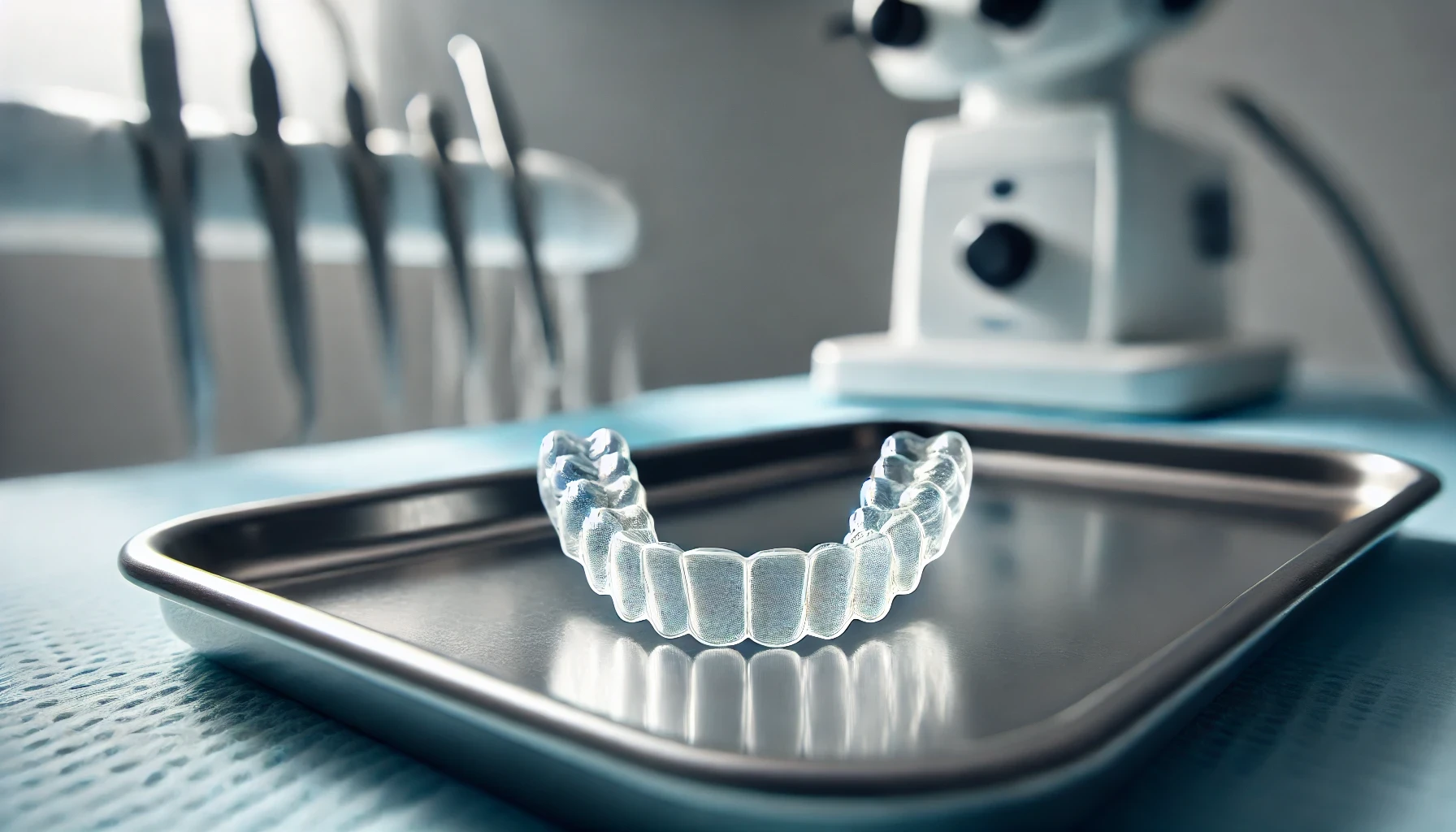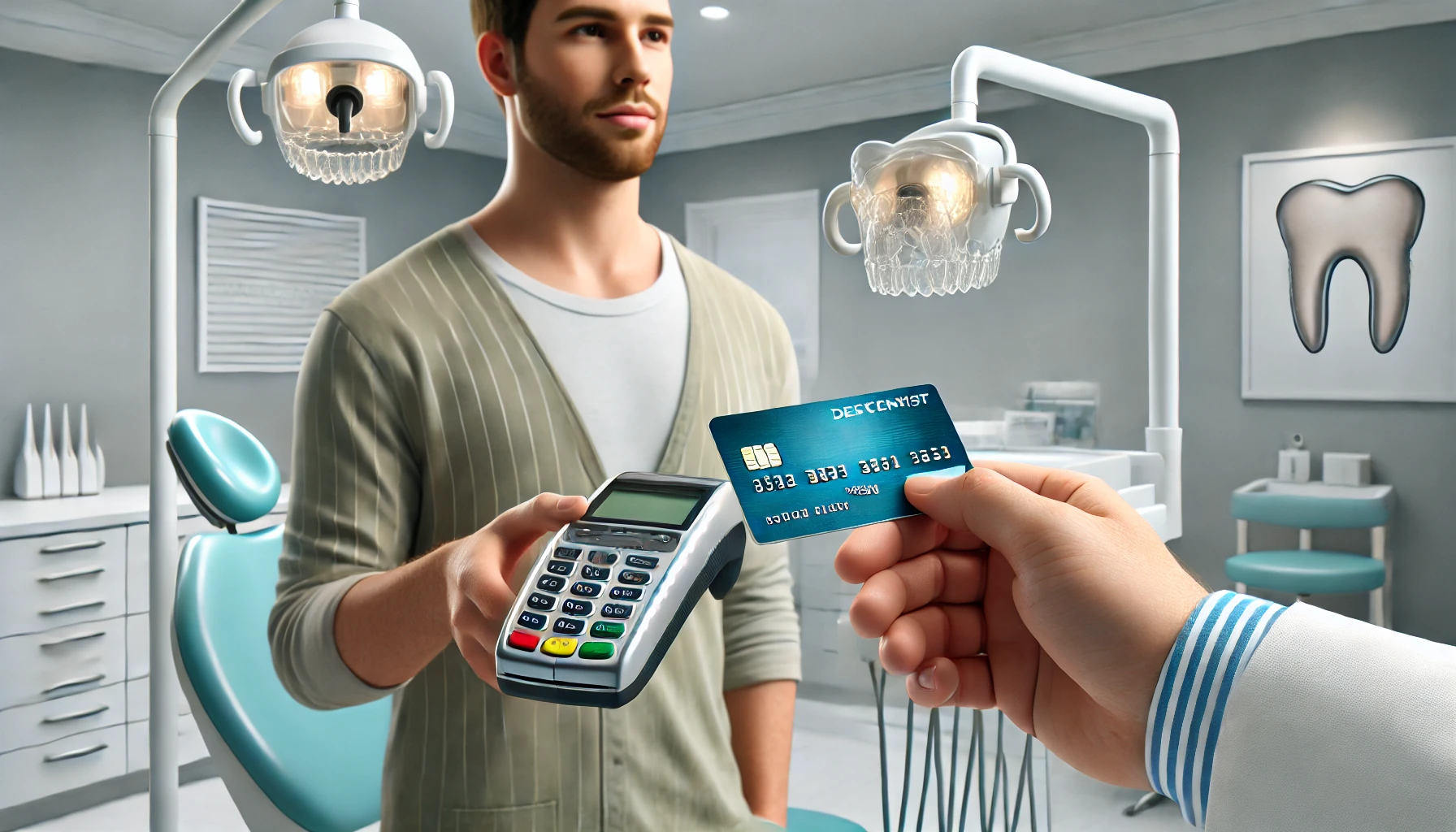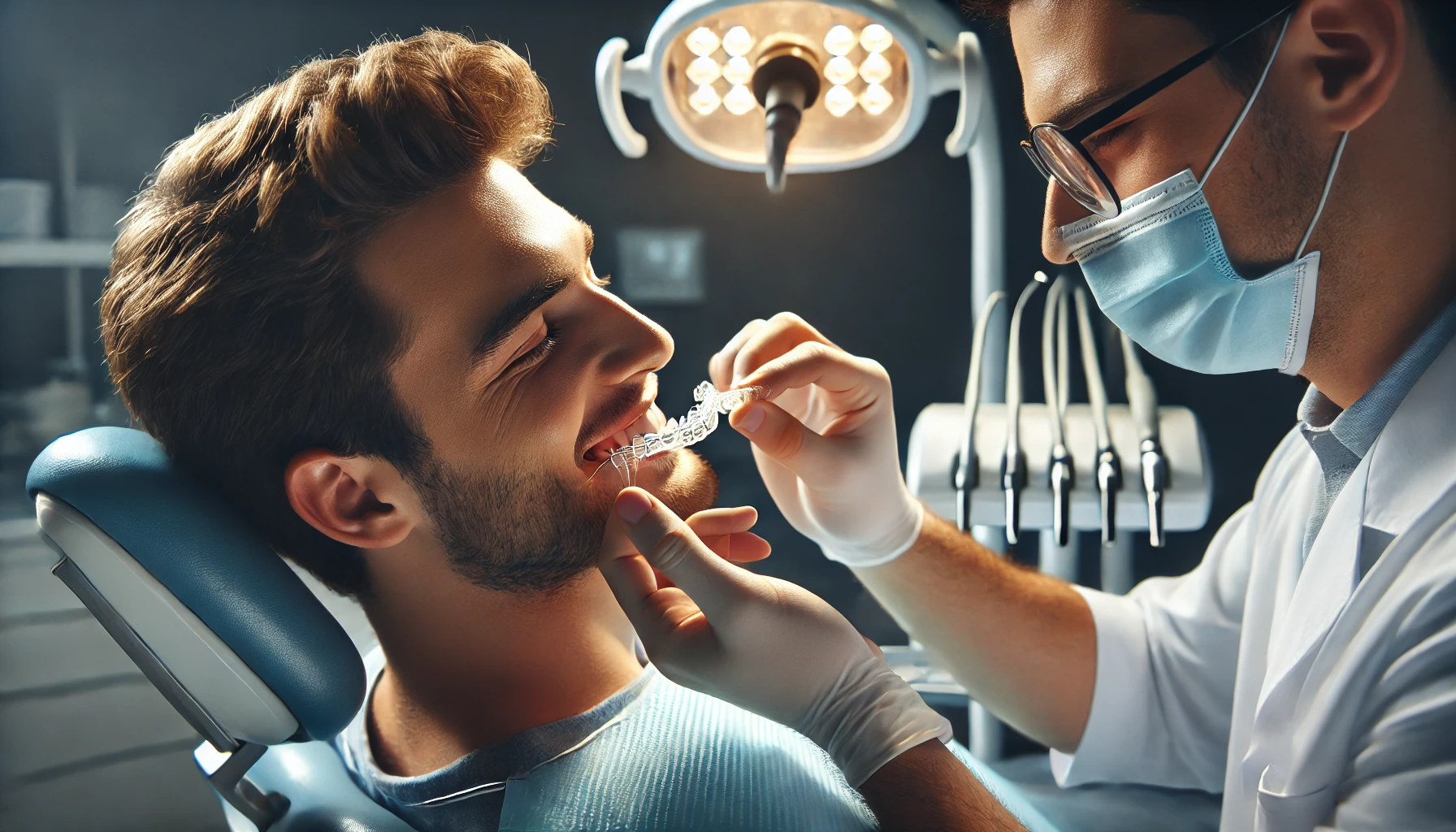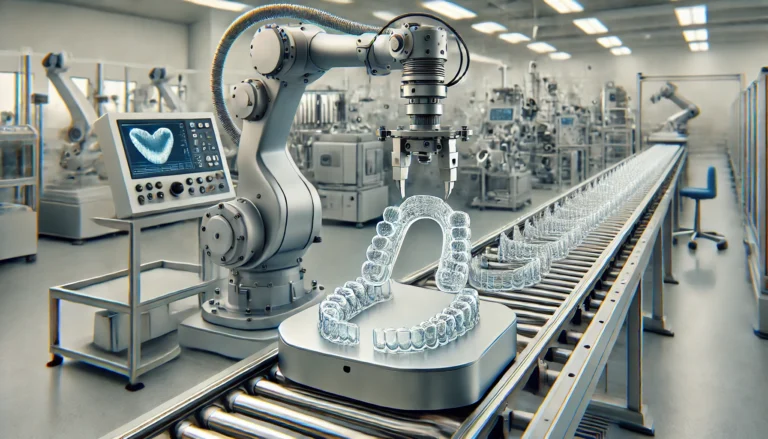
Invisalign has significantly changed the landscape of orthodontics by offering a contemporary and discreet alternative to traditional metal braces. If you’re considering straightening your teeth or improving your smile, it’s essential to grasp how Invisalign functions and the various benefits it provides. but is Invisalign worth it?
This article delves into the specifics of Invisalign, including its effective treatment process, associated costs, insurance coverage, and any potential risks. By the end of the discussion, you will have a well-rounded understanding of whether Invisalign is the right option for you.
What is Invisalign?

Invisalign represents a significant advancement in orthodontic treatment, utilising clear aligners to gradually move teeth into their desired positions. This modern approach serves as an appealing alternative to traditional braces.
The treatment employs cutting-edge technology, such as 3D imaging, to develop customised aligners specifically designed for each patient’s unique dental structure. Over the years, Invisalign has become increasingly popular among individuals of various ages, as it effectively achieves optimal teeth alignment while providing a discreet and visually appealing solution.
How Does Invisalign Work?
Invisalign operates through a well-structured application process that starts with an initial consultation, where a personalised treatment plan is created to ensure effective teeth movement.
This process includes digital scanning of your teeth, enabling the orthodontist to develop a series of clear aligners that you will wear during the treatment period.
Each set of aligners is crafted to gradually shift your teeth into the desired alignment, and regular follow-up appointments are scheduled to monitor your progress and make any necessary adjustments.
What Are the Benefits of Invisalign?
Invisalign presents a range of benefits that make it an appealing option for individuals considering orthodontic treatment. These advantages include improved aesthetics, comfort, and enhanced oral health.
Unlike traditional braces, clear aligners offer a subtle method for straightening teeth, enabling individuals to maintain their confidence throughout the treatment process. Furthermore, the removable design of Invisalign aligners encourages better oral hygiene, as patients can easily clean both their teeth and aligners.
This approach often results in increased patient satisfaction and better clinical outcomes.
1. Discreet Appearance
One of the most notable features of Invisalign is its discreet appearance, allowing individuals to straighten their teeth without the conspicuous metal brackets and wires typical of traditional braces. The clear aligners are virtually invisible, offering a comfortable and confident treatment experience for those concerned about their appearance during orthodontic treatment.
This aspect is particularly important for teenagers and adults, who often feel self-conscious about their looks in social and professional environments. The subtlety of clear aligners not only enhances aesthetic appeal but also plays a crucial role in boosting self-esteem.
Since Invisalign aligns teeth without drawing attention, individuals undergoing treatment can interact with peers without the fear of being judged for their orthodontic appliances. This convenience and minimal visibility make clear aligners an appealing option for people of various age groups, creating an inclusive atmosphere for achieving a beautiful, straight smile.
2. Comfortable to Wear
Invisalign aligners are thoughtfully designed with comfort as a priority, providing a more pleasant experience compared to traditional braces. Crafted from a smooth plastic material, these aligners significantly reduce oral discomfort and irritation often associated with metal brackets and wires, allowing users to go about their daily activities without distraction.
This innovative approach greatly enhances the overall user experience, enabling individuals to wear their aligners throughout the day without the usual soreness that comes with conventional orthodontic treatments. The aligners fit snugly over the teeth, applying gentle and consistent pressure to guide them into the desired position.
Additionally, they are easy to remove during meals and while brushing, which not only helps maintain oral hygiene but also allows users to enjoy their favourite foods without any concerns.
The impact on one’s lifestyle is truly remarkable, as it enables users to smile confidently and engage fully in social and professional interactions, free from the self-consciousness that often accompanies metal braces.
3. Removable for Easy Cleaning
One of the key advantages of Invisalign is the removability of the aligners, which allows users to maintain excellent oral hygiene throughout their treatment. Patients can easily remove their aligners during meals or when brushing and flossing, ensuring that their dental health remains a priority as they work towards their treatment goals.
This removable feature not only makes it easier to keep teeth clean, but it also helps prevent the accumulation of plaque and food particles that often occurs with traditional braces. By being able to brush and floss without any obstructions, individuals can effectively address dental issues such as cavities and gum disease during their orthodontic journey.
Cleaning the aligners themselves is also quite simple; they can be rinsed and gently scrubbed, which promotes a fresh and hygienic oral environment. This level of convenience is significant in encouraging patients to stick to their treatment plans while actively managing their dental care.
4. Can Improve Oral Health
Invisalign is designed not only to enhance aesthetics but also to improve overall oral health by promoting better teeth alignment. This can help alleviate issues such as jaw pain and improper bites.
When teeth are properly aligned, daily tasks like brushing and flossing become much simpler. This ease leads to a reduction in plaque build-up, which in turn lowers the risk of cavities and gum disease.
On the other hand, misaligned teeth can create hidden spaces where food particles and bacteria can accumulate, potentially resulting in serious dental health complications over time.
By choosing this treatment, individuals not only benefit from a straighter smile but also enjoy a healthier mouth. The advantages go beyond just physical health; improved alignment can boost self-esteem and foster a positive mental outlook, encouraging individuals to take better care of their oral hygiene.
What Are the Costs of Invisalign?

It is essential for potential patients to understand the costs associated with Invisalign, as this information can significantly impact their decision-making process regarding orthodontic treatment.
The investment in clear aligners can vary based on several factors, including the complexity of the treatment plan, geographical location, and the qualifications of the orthodontist.
Therefore, conducting a price comparison with traditional braces is an important step to consider.
1. Initial Consultation and X-rays
The initial consultation serves as a vital step in the Invisalign treatment process. During this appointment, orthodontists evaluate the patient’s dental needs and take X-rays to develop an effective treatment plan tailored to their specific requirements.
This stage is crucial for identifying particular orthodontic issues and gaining a comprehensive understanding of the individual’s overall dental health. Through the X-rays, the orthodontist obtains valuable insights into tooth alignment, the condition of the jawbone, and any underlying orthodontic concerns that may not be evident during a standard examination.
All of this information enables a personalised approach to treatment, which optimises tooth alignment while ensuring both comfort and effectiveness. In the end, well-planned consultations and precise X-ray assessments significantly contribute to the overall success of the Invisalign journey.
2. Cost of Aligners
The cost of Invisalign aligners can vary significantly, influenced by factors such as the number of aligners required and the length of the treatment.
Individuals contemplating this orthodontic option should be aware that pricing can be impacted by the complexity of their specific cases. For example, more pronounced alignment issues may necessitate additional aligners, which can increase the overall financial commitment.
Furthermore, prospective patients should consider the maintenance costs associated with regular check-ups and any necessary adjustments during the treatment process. Developing a budget that accounts for not only the initial cost but also these additional expenses will provide a clearer financial overview.
Additionally, exploring potential financing options or insurance coverage can be beneficial in alleviating the financial burden associated with these costs.
3. Additional Treatments
In certain situations, additional treatments may be required to achieve optimal results with Invisalign. This could include procedures such as tooth extraction or other dental care methods designed to facilitate proper teeth alignment.
These complementary procedures can be essential in addressing any underlying issues that might impede the effectiveness of the aligners. For instance, if a patient has overcrowded teeth, selective tooth extraction may be necessary to create the space needed for the aligners to function properly, allowing for gradual movement.
Additionally, treatments like dental bonding or the use of retainers can enhance the overall treatment plan, ensuring that the outcomes achieved with Invisalign are not only visually appealing but also beneficial for long-term dental health.
By integrating these strategies, patients can experience a more comfortable journey towards achieving the radiant smile they desire.
Is Invisalign Covered by Insurance?
Determining whether insurance covers Invisalign is an important consideration for many patients, as it significantly affects the overall cost and financial feasibility of this orthodontic treatment.
Several factors come into play when evaluating insurance coverage for clear aligner therapy, including the specific dental plan, the degree of misalignment, and any limitations outlined in the policy. It is not uncommon for certain insurance providers to categorize Invisalign as a cosmetic procedure, which may influence reimbursement rates.
Therefore, obtaining clear cost information from both the orthodontist and the insurance company can help patients make informed financial choices.
Additionally, exploring various financial options, such as payment plans or flexible spending accounts, can greatly alleviate the financial burden and enhance the accessibility of treatment.
Are There Any Risks or Side Effects?
While Invisalign is widely regarded as a safe and effective treatment option, it is important to recognise that there may be risks and side effects associated with its use. For instance, patients may experience temporary discomfort during the transition between aligners.
This discomfort often presents as pressure on the teeth but typically subsides after a few days. Additionally, some individuals may notice changes in their speech, increased salivation, or even challenges in maintaining proper oral hygiene due to the removable nature of the aligners.
To achieve the best results and minimise any adverse effects, it is essential for patients to closely follow their orthodontist’s recommendations. This includes wearing the aligners for the prescribed duration each day and attending regular check-ups.
By actively participating in their treatment plan, patients can significantly improve their comfort and enhance the overall effectiveness of the Invisalign process.
Is Invisalign Worth It?

Determining whether Invisalign is a worthwhile investment primarily hinges on personal needs and goals. This includes considerations such as aesthetic preferences, comfort levels, and the particular dental issues that require attention.
1. Depends on Individual Needs and Goals
The value of Invisalign as a treatment option largely depends on individual needs, including personal comfort with wearing aligners, aesthetic preferences, and the specific treatment goals established by the patient and their orthodontist.
This important evaluation can significantly affect the overall success of the treatment process, as it enables a customised approach that aligns with the patient’s true desires.
For example, some individuals may prioritise discretion and prefer clear aligners that seamlessly integrate into their daily routines, while others may be more focused on the efficiency of treatment timelines.
By setting clear goals and addressing individual concerns, orthodontists can leverage the advantages of Invisalign—such as enhanced comfort and subtlety—to create a collaborative environment. The alignment between a patient’s expectations and the treatment’s capabilities is crucial, ultimately increasing the likelihood of achieving the desired outcomes.
2. Consider Long-term Benefits
Patients should take into account the long-term benefits of Invisalign, which often surpass the short-term costs. Achieving proper teeth alignment can lead to improved dental health and potentially lower maintenance costs in the future.
By opting for this advanced orthodontic treatment, individuals may not only enhance their oral aesthetics but also decrease the likelihood of encountering serious dental issues later on. While the duration of treatment can vary, there is ample documentation supporting Invisalign’s effectiveness in promoting better bite alignment and alleviating jaw strain.
In the long run, patients can appreciate the overall value of a healthier smile, which typically requires less frequent dental visits and interventions. Ultimately, the decision to prioritise long-term health can have a significant impact on overall wellbeing and can boost confidence in one’s appearance.
3. Consult with Orthodontist
A thorough consultation with a qualified orthodontist is essential for determining whether Invisalign is the right choice for you, as they can offer professional advice tailored to your specific dental needs.
During this consultation, the orthodontist will assess your oral health and alignment while also discussing your individual goals and preferences regarding your smile. They will take a comprehensive approach to evaluate your eligibility for Invisalign, ensuring that this clear aligner system aligns with both your lifestyle and dental situation.
By examining factors such as the severity of your dental issues and the overall condition of your teeth, the orthodontist will develop a personalised treatment plan aimed at maximising both effectiveness and comfort.
It is important to seek their expert opinion before committing to any treatment, as their knowledge is invaluable in guiding you towards the best option for achieving the smile you have always desired.
Final Thoughts

Invisalign emerges as a highly effective and visually appealing orthodontic solution that has positively impacted the lives of many individuals seeking to straighten their teeth and enhance their oral health.
This innovative clear aligner system provides a discreet alternative to traditional braces, allowing patients to achieve their desired results without the discomfort and aesthetic drawbacks of metal brackets. By leveraging advanced technology, Invisalign tailors treatment plans to accommodate the unique dental structure of each individual, making it a preferred choice among both teenagers and adults.
As patients progress through their aligner trays, they often notice not only improved alignment but also a boost in their confidence regarding their smiles. Thus, the success stories associated with this treatment option underscore not only patient satisfaction but also a significant enhancement in overall dental health and self-esteem.
Frequently Asked Questions
What is Invisalign and how does it work?
Invisalign is a type of orthodontic treatment that uses clear aligners to gradually shift the teeth into proper alignment. These aligners are custom-made for each individual and are worn for a certain period of time, typically 22 hours a day. They work by applying gentle pressure to the teeth, gradually moving them into the desired position.
How does the cost of Invisalign compare to traditional braces?
The cost of Invisalign varies depending on the individual case and the provider. However, in general, Invisalign tends to be more expensive than traditional braces. This is due to the technology and materials used in creating the custom aligners. It is important to consider the long-term benefits and potential savings before making a decision.
What are the benefits of choosing Invisalign over traditional braces?
Invisalign offers several benefits over traditional braces. One of the main advantages is that the aligners are virtually invisible, making them a popular choice for adults and professionals. Additionally, they are removable, allowing for easier cleaning and eating. They also tend to be more comfortable and cause less irritation to the gums and cheeks.
Are there any drawbacks to choosing Invisalign?
Like any orthodontic treatment, there are some potential drawbacks to choosing Invisalign. The aligners must be worn for at least 22 hours a day, which may require a higher level of commitment and responsibility. Also, the aligners must be removed before eating, so there may be some limitations on what you can eat and when. Additionally, Invisalign may not be suitable for more complex teeth alignment issues.
How long does the Invisalign treatment process take?
The length of the Invisalign treatment process varies for each individual, as it depends on the severity of the teeth misalignment. On average, Invisalign treatment can take anywhere from 6 months to 2 years. This is comparable to the treatment time for traditional braces.
Is Invisalign covered by insurance?
This depends on your specific insurance plan. Some insurance plans may cover a portion of the cost of Invisalign, while others may not cover it at all. It is important to check with your insurance provider beforehand to see if Invisalign is covered under your plan. Additionally, some Invisalign providers may offer payment plans or financing options to make the treatment more affordable.





